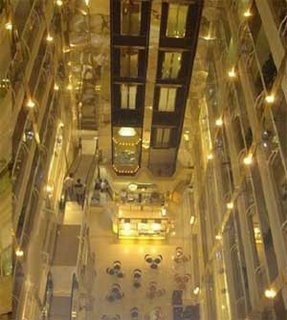Cities and Sea Levels

Just ten years ago news stories about the catastrophic effects of climate change were phrased largely in hypothetical terms. As I recall, such stories would appear in the mainstream media only once every several months. Nowadays the stories are not hypothetical; they are about real changes underway right now: melting polar ice caps, species extinction, unprecedented numbers of hurricanes and droughts, and on and on. Such stories are an almost daily occurence, providing a frightening backdrop to our lives. Just last week a story was published in the Times of London that reported on scientific findings that "dozens of the world’s cities, including London and New York, could be flooded by the end of the century." This article is based primarily on research appearing in the latest edition of Science. Time also leads its current edition, which focuses on global warming, with the front page headline: "be worried, be very worried." All of this made me wonder whether anyone was thinking concretely about how this might impact our lives and our childrens' lives. Surprisingly, it is difficult to find much information that is local rather than global in orientation (please suggest resources if you know of any). One exception I just came across is a 'mash-up' which overlays data about sea level increases onto google earth. Check it out here. You can look at cities around the world and then watch how a 2, 4, or 12 meter increase in sea levels would affect them. For most coastal cities it doesn't look good.
What we can't learn from the map is how this will affect the social life of cities and nations. Much will depend on the speed of the changes. It's certainly an area which requires a lot more anthropological research. So if you're thinking of graduate school, keep that in mind. As a friend of mine who worked at Human Rights Watch once told me when I was thinking about going into human rights work: "Well, you should consider doing it because, unfortunately, it's a growing industry." Unfortunately, so too is global warming.





